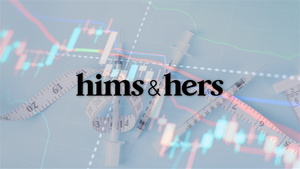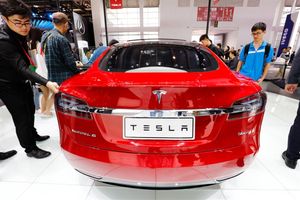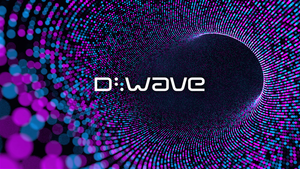
United Nations, New York – September 25, 2025 – In a significant and highly anticipated address to the United 80th session of the Nations General Assembly (UNGA) today, Palestinian President Mahmoud Abbas delivered a powerful and nuanced speech that simultaneously rejected the actions of Hamas, reaffirmed a steadfast commitment to a two-state solution, and underscored the unwavering Palestinian dedication to their homeland. Speaking virtually after being denied a visa to attend in person by the United States, Abbas's words resonated across diplomatic circles, sending subtle yet undeniable ripples through the global geopolitical landscape. While direct, immediate market spikes in safe-haven assets like gold and silver were not explicitly reported in the immediate aftermath of this particular address, such pronouncements invariably contribute to an overarching environment of uncertainty that historically bolsters the appeal of precious metals as a store of value.
The President's address comes at a critical juncture for the Middle East, a region perpetually on edge. His dual stance – condemning Hamas's October 7th attack while vehemently advocating for Palestinian statehood – reflects a complex political tightrope walk. For financial markets, especially those attuned to geopolitical risk, this speech, though not causing an instant tremor, reinforces the persistent undercurrents of instability that drive investors towards traditional safe havens. The ongoing dialogue, or lack thereof, surrounding the Israeli-Palestinian conflict, punctuated by such high-profile diplomatic moments, serves as a constant reminder of potential global flashpoints, making assets like gold and silver increasingly attractive to those seeking refuge from volatility.
Abbas Navigates a Fractured Landscape: Details of a Pivotal UN Address
President Mahmoud Abbas's virtual appearance before the UNGA today, necessitated by a U.S. visa denial that also affected approximately 80 other Palestinian officials – a decision the UN General Assembly overwhelmingly voted (145-5) to circumvent by allowing remote participation – was marked by several critical declarations. Abbas unequivocally stated that the actions carried out by Hamas on October 7th "do not represent the Palestinian people, nor their just struggle for freedom and independence." He further asserted that Hamas would have "no role to play in governance" in Gaza post-conflict and must "hand over their weapons to the Palestinian national authority," affirming the Palestinian Authority's readiness to assume full responsibility for governance and security in Gaza.
Crucially, Abbas reiterated his long-standing commitment to a two-state solution, envisioning a Palestinian state alongside Israel, co-existing in "peace, stability and security." He called for an international peace conference within a year and urged the full implementation of a UN General Assembly resolution for an Israeli withdrawal from the West Bank, Gaza, and East Jerusalem within a year, noting the recent international recognitions of Palestinian statehood as positive steps. A profound emphasis was placed on the Palestinian people's connection to their land, with Abbas declaring, "We will not leave. Palestine is our homeland... It will remain ours, and if anyone were to leave, it would be the occupying usurpers." He also strongly criticized Israel, accusing it of "genocide, destruction, starvation and displacement" in Gaza, and condemned the United States for "obstructing" UN Security Council resolutions demanding a ceasefire and for providing Israel with "deadly weapons."
Initial reactions were swift and varied. While several nations, including France, the UK, and Canada, welcomed the recent recognition of Palestinian statehood, Israel's UN Ambassador Danny Danon quickly criticized Abbas's speech, arguing that it lacked explicit condemnation of Hamas. The U.S. reiterated its support for a two-state solution but only through direct negotiations, implicitly rejecting unilateral recognition. This complex tapestry of statements and reactions underscores the deep divisions and challenges inherent in resolving the long-standing conflict, contributing to the ongoing geopolitical uncertainty that often underpins safe-haven asset demand.
Market Beneficiaries Amidst Geopolitical Currents: The Case for Precious Metals Companies
While President Abbas's address did not trigger an immediate, sharp reaction in precious metals markets, the sustained geopolitical tensions it highlights create a fertile environment for companies involved in gold and silver. Investors seeking stability in uncertain times frequently turn to these tangible assets, which in turn boosts the prospects of the companies that mine, refine, and trade them. The "flight-to-safety" phenomenon during periods of international conflict, political instability, and economic turmoil directly translates into increased demand and price appreciation for both gold and silver.
Major gold mining companies such as Newmont Corporation (NYSE: NEM) and Barrick Gold (NYSE: GOLD) stand to benefit significantly. As the world's largest gold producers, their revenues and profit margins are directly bolstered by surging gold prices. Similarly, prominent silver miners like Pan American Silver Corp. (NASDAQ: PAAS) and Fresnillo PLC (LSE: FRES), one of the largest silver producers globally, see enhanced profitability when silver prices climb. These companies often exhibit operational leverage, meaning their profits can increase at an even faster rate than the rise in precious metal prices, amplifying stock gains.
Beyond direct miners, streaming and royalty companies such as Franco-Nevada Corporation (NYSE: FNV) and Wheaton Precious Metals Corp. (NYSE: WPM) also become attractive. These firms provide upfront capital to miners in exchange for a percentage of future production or revenue, benefiting from higher metal prices without incurring direct operational costs. For investors seeking diversified exposure without direct physical ownership, precious metals Exchange-Traded Funds (ETFs) like the SPDR Gold Trust (NYSE: GLD) and the iShares Silver Trust (NYSE: SLV) offer liquid and accessible avenues to capitalize on rising gold and silver prices. These ETFs experience increased inflows during geopolitical crises, serving as a crucial hedge against market disruption and currency devaluation, and providing valuable portfolio diversification due to their low correlation with traditional assets.
The Broader Canvas: Geopolitical Drivers and Historical Precedents for Precious Metals
President Abbas's address, while specific in its immediate context, must be viewed within the broader tapestry of Middle Eastern geopolitics. The ongoing Israeli-Palestinian conflict, coupled with wider regional instabilities, consistently fuels a narrative of uncertainty that resonates deeply within financial markets. Such events underscore the inherent risks in global affairs, prompting a fundamental shift in investor sentiment towards assets perceived as stable and reliable stores of value. This "flight to safety" is a well-documented phenomenon, where capital moves from riskier equities and volatile currencies into hard assets.
The speech itself, calling for an immediate ceasefire, Israeli withdrawal, and international recognition of Palestinian statehood, amidst accusations of "genocide" against Israel and criticism of the U.S., significantly complicates regional stability. It highlights the profound internal divisions within Palestinian politics and the ongoing struggle for international consensus. This diplomatic pressure, especially with a wave of countries recognizing Palestinian statehood, could lead to shifts in international policy, potentially impacting aid, trade, and security alliances, further contributing to a volatile global outlook.
Historically, major geopolitical events, particularly those involving the Middle East, have consistently driven demand for gold and silver as safe-haven assets. During the Gulf War (1990-1991), gold prices jumped by approximately 15%. The Iranian Revolution (1978-1979) and subsequent Iran-Iraq War saw gold prices rise dramatically, by an "incredible" 126% in 1979 alone. More recently, gold rallied over 5% in the weeks following the Hamas-Israel War (October 2023), and hit record highs (around $3,790.82 per ounce) during the Israel-Iran conflict in June 2025. These precedents underscore the perception of precious metals as anti-fragile crisis hedges, providing a stark contrast to the volatility of traditional financial markets during times of strife.
Beyond immediate geopolitical triggers, the current rally in precious metals is also fitting into several broader industry trends. Expectations of interest rate cuts by central banks, persistent inflationary pressures, aggressive global central bank buying, and the burgeoning industrial demand for silver are providing strong structural support for gold and silver prices. Central banks are accumulating gold at an unprecedented pace to diversify reserves and mitigate monetary risks. Furthermore, silver's dual role as both a monetary asset and a critical industrial commodity—vital for solar energy, electric vehicles, and semiconductors—ensures a robust demand floor, giving it stronger price elasticity and potential for asymmetric upside during geopolitical stress. This confluence of factors paints a bullish picture for precious metals, cementing their role as essential components in a diversified portfolio in an increasingly uncertain world.
The Path Ahead: Navigating Future Scenarios for Precious Metals
The geopolitical landscape, significantly shaped by events like President Abbas's UN address, points to continued volatility in the short to medium term. The unresolved Israeli-Palestinian conflict, coupled with broader regional dynamics and ongoing global power shifts, ensures that uncertainty will remain a dominant theme. For precious metals markets, this translates into a sustained underlying demand for safe-haven assets, even if specific diplomatic pronouncements don't trigger immediate, dramatic price movements.
In the short term, gold and silver prices are expected to remain buoyant, primarily driven by continued safe-haven demand stemming from the Middle East. Any further escalation of conflicts or heightened diplomatic tensions would likely provide additional impetus for these metals, as investors seek to protect their wealth. Central bank monetary policy, particularly dovish stances or declining real yields from the US Federal Reserve, will also play a crucial role, boosting the attractiveness of non-yielding assets. While short-term pullbacks due to overbought signals are possible, the overall bullish momentum is anticipated to persist.
Long-term, the outlook for gold and silver remains largely positive. Structural factors such as continued geopolitical uncertainties, aggressive central bank buying, de-dollarization efforts by various nations, and robust industrial demand for silver are powerful forces expected to sustain elevated prices. Silver's dual role as both a precious and an industrial metal, crucial for the accelerating global energy transition in sectors like solar, electric vehicles, and semiconductors, positions it for significant long-term growth, potentially leading to a "commodity supercycle."
Investors navigating this environment should consider strategic adaptations: diversifying portfolios with a portion allocated to gold and silver, monitoring geopolitical developments and central bank monetary policies closely, and recognizing silver's unique industrial demand drivers. Market opportunities include capitalizing on persistent safe-haven demand, silver's industrial growth, and potential buying opportunities during short-term dips. Challenges include heightened volatility and the potential for market desensitization to recurring conflicts, alongside the impact of a strong U.S. dollar or supply constraints. Potential scenarios range from significant escalation leading to sharp price surges, to de-escalation causing temporary pullbacks, or a protracted tension maintaining a geopolitical risk premium on prices.
A Resilient Haven: Precious Metals in an Uncertain World
President Mahmoud Abbas's UN address on September 25, 2025, serves as a poignant reminder of the enduring geopolitical complexities in the Middle East. His dual message – rejecting Hamas's violence while affirming the Palestinian commitment to a two-state solution and their homeland – highlights the deep-seated challenges that continue to fuel global uncertainty. While this specific diplomatic event did not trigger an immediate, dramatic surge in gold and silver prices, it undeniably reinforces the persistent undercurrents of instability that drive safe-haven demand for these precious metals.
Moving forward, the market for gold and silver appears poised for continued strength. The confluence of geopolitical risks, ongoing inflationary pressures, aggressive central bank gold accumulation, and the burgeoning industrial demand for silver creates a robust foundation for sustained price appreciation. Investors should view gold and silver not merely as speculative assets, but as essential components of a diversified portfolio, offering a hedge against currency devaluation, systemic risk, and market volatility.
The lasting impact of such geopolitical events is often seen in the sustained re-evaluation of risk by investors globally. As the world grapples with a multitude of potential flashpoints, from regional conflicts to broader economic anxieties, the intrinsic value and safe-haven properties of gold and silver become ever more pronounced. What investors should watch for in the coming months includes any escalation or de-escalation of Middle East tensions, shifts in global central bank monetary policies, and continued data on industrial demand for silver, particularly from green energy sectors. In a world defined by uncertainty, precious metals continue to shine as a resilient haven.
This content is intended for informational purposes only and is not financial advice.






